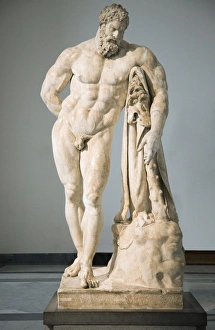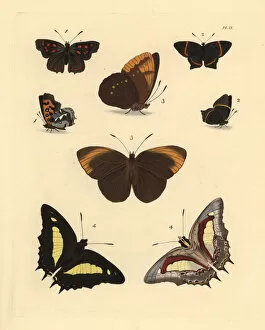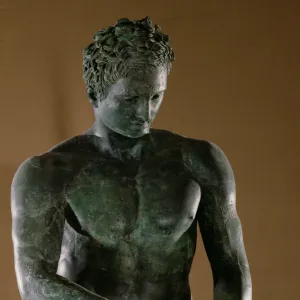Lysippus Collection
Lysippus, the renowned Greek sculptor of ancient times, left an indelible mark on art history with his masterpieces
All Professionally Made to Order for Quick Shipping
Lysippus, the renowned Greek sculptor of ancient times, left an indelible mark on art history with his masterpieces. One such masterpiece is the Roman statue of Hercules, a powerful depiction that showcases Lysippus' exceptional skill and attention to detail. Another notable work attributed to the Apoxyomenos, a marble copy of his original bronze sculpture created around 320 BC. This captivating piece portrays an athlete in action, capturing the essence of strength and grace. Intriguingly, it also ventured into creating sculptures inspired by nature's beauty. Exotic butterflies adorned some of his works, adding a touch of whimsy and enchantment to his already awe-inspiring creations. Lysippus' talent was not limited to mere mortals; he also immortalized Alexander the Great in marble. The bust captures the commanding presence and charisma that made Alexander one of history's most influential figures. The Apoxyomenos appears again in Lysippus' repertoire as a Roman copy of his Greek original. This particular version depicts a boxer meticulously cleaning his right hand after intense combat—a testament to both physical prowess and meticulousness. One cannot discuss Lysippus without mentioning Hercule Farnese—a Roman replica based on another Greek work by this esteemed artist. This sculpture showcases Hercules in all his glory—muscular physique and determined expression—embodying strength personified. A smaller but equally captivating creation attributed to the statuette depicting Hercules at rest—an intimate portrayal that reveals vulnerability amidst unparalleled power. Lastly, we encounter "the so-called Apoxyomenosa, " or "the Scraper. " Though its attribution remains uncertain, it bears resemblance to other works associated with Lysippus due to its refined craftsmanship and attention to anatomical accuracy.













